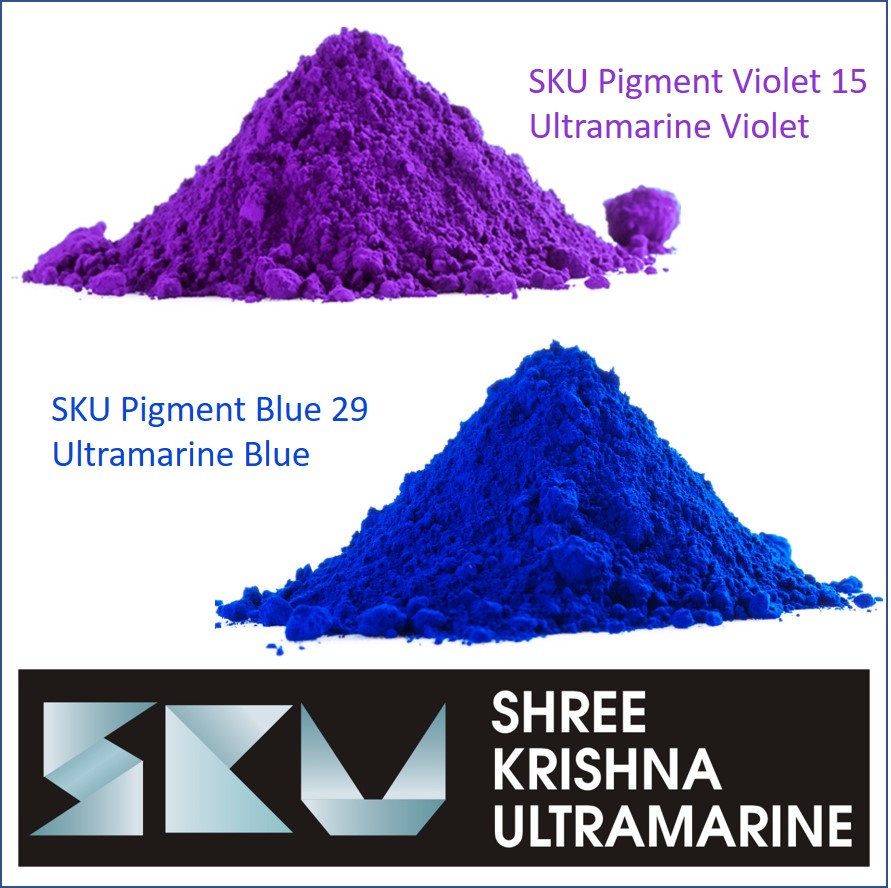Ultramarine Pigments: From Ancient Art to Modern Industry

For centuries, color has influenced art, design, and industry. Among the most celebrated hues, Ultramarine is revered for its timeless brilliance. Today, companies like SKU Pigments supply high-quality Ultramarine pigments, including Ultramarine Blue, Ultramarine Violet, Pigment Blue 29, and Pigment Violet. From industrial coatings and packaging, Ultramarine has become the backbone of modern blue pigments.
The History and Significance of Ultramarine
The name Ultramarine comes from the Latin “ultra mare,” meaning “beyond the sea,” a reference to lapis lazuli originally imported from Afghanistan. For centuries, it was a rare treasure, used by Renaissance masters to illuminate manuscripts. It symbolized wealth and divinity.
Modern chemistry made it possible to manufacture Ultramarine pigments, bringing the once-exclusive shade into everyday use. This breakthrough turned a precious rarity into a widely available solution for countless sectors.
Why Ultramarine Blue Leads the Industry
Ultramarine Blue pigments—the synthetic form of Pigment Blue 29—are industry favorites. Known for their stability, they are sustainable and reliable. They are used in:
• Architectural and industrial paints for long-lasting shades.
• Automotive and packaging industries, thanks to UV resistance.
• Inks and printing, where sharpness is vital.
• Cosmetics, given their skin-safe quality.
This balance of durability and eco-friendliness keeps Ultramarine Blue among the most demanded pigments.
The Elegant Appeal of Violet Shades
Ultramarine Violet offers delicate hues that appeal in cosmetics. Pigment Violet derived from Ultramarine is stable, making it ideal for children’s toys.
Its sophisticated tone enhances interior design, while ensuring longevity without chemical breakdown.
Pigment Blue in Modern Industries
Pigment Blue—particularly Ultramarine Blue pigments—remains a trusted industrial choice. It offers eco-friendly performance for:
• Automotive paints with resistance to fading.
• Branding, ensuring consistent identity.
• Decorative plasters, adding strength and aesthetics.
This wide applicability ensures Pigment Blue’s Blue Pigments future relevance.
Why Industries Prefer Ultramarine
• Non-Toxic & Safe: Ideal for cosmetics and toys.
• Heat & Light Resistant: Stable in outdoor use.
• Eco-Friendly: Manufactured with sustainability.
• Cost-Effective: Budget-friendly industrial choice.
• Versatile: Across paints, plastics, printing, and construction.
Where Ultramarine Pigments Shine
1. Paints & Coatings: Durable architectural shades.
2. Plastics & Rubber: Safe for packaging.
3. Cosmetics: Luxury formulations.
4. Construction: Plaster and decorative finishes.
5. Printing & Inks: Sharp colors for publishing.
Why Choose SKU Pigments?
SKU Pigments is a trusted manufacturer, offering innovation in Ultramarine pigments. Their product portfolio includes:
• Pigment Blue 29 for industrial-scale use.
• Ultramarine Violet and Pigment Violet for luxury tones.
• Custom shades for niche industries.
Their reputation is built on global reach and green practices.
Final Thoughts on Ultramarine Pigments
From a costly luxury to a global industrial pigment, Ultramarine has stood the test of time. Whether it’s the timeless vibrancy of Ultramarine Blue, the sophistication of Ultramarine Violet, or the stability of Pigment Blue 29, Ultramarine pigments remain indispensable.
With SKU Pigments as a leading manufacturer, industries secure reliable pigment supply. As demand for eco-friendly pigments rises, Ultramarine will stay ahead in global markets.
Frequently Asked Questions
1. What is Ultramarine?
A blue/violet pigment with historic roots and modern industrial use.
2. What is Pigment Blue 29?
The synthetic form of Ultramarine Blue.
3. Where is Ultramarine Violet used?
In cosmetics and decorative paints.
4. Are Ultramarine pigments safe?
Certified safe for cosmetics and toys.
5. Why choose SKU Pigments?
Because of quality, eco-focus, and range.